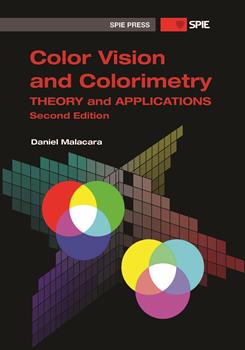|
The bases for the addition of colors and color-matching experiments were established by Grassmann (1853), who attributed many of his ideas to Maxwell (1857, 1860). These laws express the following facts: (a) To specify a color, three elements are necessary and sufficient: the hue, the luminance, and the luminance of the intermixed white, which defines the saturation. (b) For every color, there is complementary color, which, when mixed together, produce a colorless gray. (c) Two lights with the same hue and saturation, when mixed, produce another color with identical hue and saturation, independent of their power spectra. (d) The total luminance of any mixture of light is the sum of the luminances of the lights being mixed. These laws are the basics of all mathematical procedures later established in colorimetry. However, some important conditions must be considered: (a) All color matches must be made under similar conditions. (b) Caution must be taken to avoid the previous light exposure of the eyes affecting the state of adaptation, influencing the spectral sensitivity of the eye. (c) If a field diameter larger than 10 deg is used in a color match, a failure of the proportionality law may be found. 4.2 Maxwell's Triangle The likely first attempts to produce some color curves describing the trichromatic theory of color were those of Maxwell (1857, 1860). As described before, the first chromaticity diagram was a circle devised by Newton. Later, Maxwell used an equilateral triangle, as illustrated in Fig. 4.1. Each of the three primary colors red (R), green (G), and blue (B) in his trichromatic theory are on each corner of the triangle. The white color is in the middle. Any other color is formed by three components - r, g, and b - represented by the distances from each of the three sides of the triangle. This triangular representation has often been used with several modifications, and it is not clear how Maxwell defined and used it (Wintringham, 1951). |
|
|


